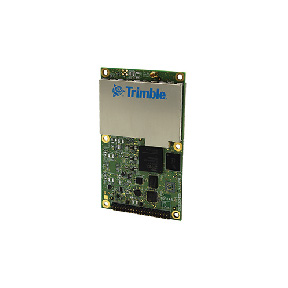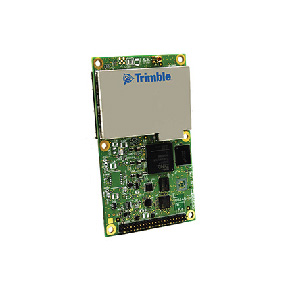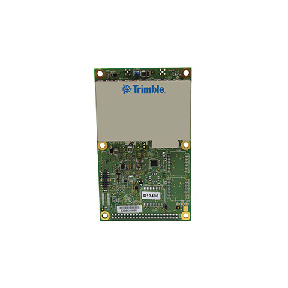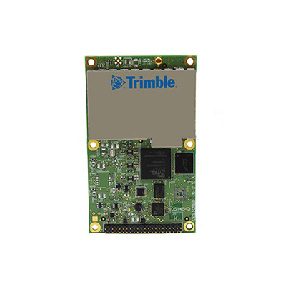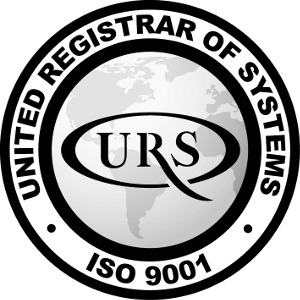La fiche produit est en anglais pour respecter les données du fabricant.
Key Features:
- Trimble Maxwell 7 Technology
- 336 Channels for multi-constellation GNSS support
- OmniSTAR/RTX Support
- Compact design for mobile applications
- Flexible RS232, USB and Ethernet interfacing
- Centimeter level positioning accuracy
- Advanced RF Spectrum Monitoring
Trimble Maxwell 7 Technology
The Trimble® BD990 supports triple frequency
for the GPS, GLONASS, BeiDou and Galileo
constellations. As the number of satellites in
the constellations grows the BD990 is ready to
take advantage of the additional signals. This
delivers the quickest and most reliable RTK
initializations for centimeter positioning. With
the latest Trimble Maxwell™ 7 Technology, the
BD990 provides :
- 336 Tracking Channels
- Trimble Everest Plus multipath mitigation
- Advanced RF Spectrum Monitoring and Analysis
- Proven low-elevation tracking technology
With the option of utilizing OmniSTAR or RTX
services, the BD990 delivers varying levels of
performance down to centimeter-level without
the use of a base station.
Designed for growth
The Trimble BD990 is part of a family of
receivers that support advanced functionality.
In the same mechanical footprint and pin-out
the Trimble BD992 supports dual antenna
GNSS heading while the Trimble BD992-INS
supports position and orientation at high
update rates. Industry professionals trust
Trimble embedded positioning technologies as
the core of their precision applications. Moving
the industry forward, the Trimble BD990
redefines high-performance positioning
Flexible interfacing
The Trimble BD990 was designed for easy
integration and rugged dependability.
Customers benefit from the Ethernet
connectivity available on the board, allowing
high speed data transfer and configuration via
standard web browsers. USB, CAN and RS-232
are also supported. Just like other Trimble
embedded technologies, easy to use software
commands simplify integration and reduce
development times.
Different configurations of the module are
available. These include everything from a
DGPS L1 unit all the way to a four constellation
triple frequency RTK unit. All features are
password-upgradeable, allowing functionality
to be upgraded as your requirements change.
Les caractéristiques produits sont en anglais pour respecter les données du fournisseur.
Technical specifications1
- Trimble Maxwell 7 Technology
- 336 Tracking Channels:
- GPS: L1 C/A, L2E, L2C, L5
- BeiDou: B1, B2, B313
- GLONASS: L1 C/A, L2 C/A, L3 CDMA14
- Galileo2: E1, E5A, E5B, E5AltBOC, E614
- IRNSS: L5
- QZSS: L1 C/A, L1 SAIF, L2C, L5, LEX
- SBAS: L1 C/A, L5
- MSS L-Band: OmniSTAR, Trimble RTX
- High precision multiple correlator for GNSS pseudorange measurements
- Trimble Everest Plus multipath mitigation
- Advanced RF Spectrum Monitoring and Analysis
- Unfiltered, unsmoothed pseudorange measurements data for low noise, low multipath error, low time domain correlation and high dynamic response
- Very low noise GNSS carrier phase measurements with <1 mm precision in a 1 Hz bandwidth
- Proven Trimble low elevation tracking technology
- Reference outputs/inputs
- CMR, CMR+, sCMRx, RTCM 2.1, 2.2, 2.3, 3.0, 3.112, 3.2
- Navigation outputs
- ASCII: NMEA-0183 GSV, AVR, RMC, HDT, VGK, VHD, ROT, GGK, GGA, GSA, ZDA,
VTG, GST, PJT,PJK, BPQ, GLL, GRS, GBS and Binary: Trimble GSOF, NMEA2000
- 1 Pulse Per Second Output
- Event Marker Input Support
- Supports Fault Detection & Exclusion (FDE), Receiver Autonomous Integrity Monitoring
(RAIM)
Communication
- 1 USB 2.0 Device port
- 1 LAN Ethernet port:
- Supports links to 10BaseT/100BaseT auto-negotiate networks
- All functions are performed through a single IP address simultaneously—including
web GUI access and raw data streaming
- Network Protocols supported
- HTTP (web GUI)
- NTP Server
- NMEA, GSOF, CMR over TCP/IP or UDP
- NTripCaster, NTripServer, NTripClient
- mDNS/uPnP Service discovery
- Dynamic DNS
- Email alerts
- Network link to Google Earth
- Support for external modems via PPP
- RDNIS Support
- 2 x RS232 ports
- Control Software: HTML web browser, Internet Explorer, Firefox, Safari,
Opera, Google Chrome
- 1 CAN Port
Performance specifications
- Time to First Fix (TTFF)7
- Cold Start8 : <45 seconds
- Warm Start9 : <30 seconds
- Signal Re-acquisition : <2 seconds
- Velocity Accuracy3 , 4
- Horizontal : 0.007 m/sec
- Vertical : 0.020 m/sec
- Maximum Operating Limits10
- Velocity : 515 m/sec
- Altitude 18,000 m
- 1 CAN Port (requires addition of CAN Transceiver by customer) : +/- 11g
- RTK initialization time3 : typically <8 seconds
- RTK initialization reliability3 : >99.9%
- Position Latency5 : <20ms
- Maximum Position/Attitude Update Rate : 50 Hz
Physical and electrical characteristics
- Size : 100 mm x 60 mm x 11.6 mm
- Power : 3.3 V DC +5%/-3%
Typical 1.7 W (L1/L2 GPS + L1/L2 GLONASS)
- Weight : 54 grams
- Connectors
- I/O : 44-pin header
- GNSS Antenna : 2 x MMCX receptacle
- Antenna LNA Power Input
- Input voltage : 3.3 V DC to 5 V DC
- Maximum current : 400 mA
- Minimum required LNA Gain : 32.0 dB
Environmental characteristics11
- Temperature
- Operating : –40 °C to +75 °C
- Storage : –55 °C to +85 °C
- Vibration : MIL810F, tailored
Random 6.2 gRMS operating
Random 8 gRMS survival
- Mechanical shock : MIL810D
±40 g 10ms perating
±75 g 6ms survival
- Operating Humidity : 5% to 95% R.H. non-condensing, at +60 °C
1 Trimble BD990 is available in a variety of software configurations. Specifications shown reflect full capability.
2 Developed under a License of the European Union and the European Space Agency.
3 May be affected by atmospheric conditions, signal multipath, and satellite geometry. Initialization reliability is
continuously monitored to ensure highest quality.
4 1 sigma level, when using Trimble Zephyr 2/3 antennas, add 1 ppm to RTK Position accuracies.
5 At maximum output rate.
6 GPS only and depends on SBAS System performance. FAA WAAS accuracy specifications are <5 m 3DRMS.
7 Typical observed values.
8 No previous satellite (ephemerides / almanac) or position (approximate position or time) information.
9 Ephemerides and last used position known
10 As required by the U.S. Department of Commerce to comply with export licensing restrictions.
11 Dependent on appropriate mounting/enclosure design.
12 Input only network correction
13 There is no public GLONASS L3 CDMA. The current capability in the receivers is based on publicly available
information. As such, Trimble cannot guarantee that these receivers will be fully compatible.
14 Trimble RTX and OmniSTAR accuracies depend on correction service chosen. Trimble CenterPoint RTX provides
<4cm horizontal accuracy 95% of the time with initializations of less than 30 minutes.
15 Also available in configurations with RTK accuracies limited to 10 and 30 centimeters



